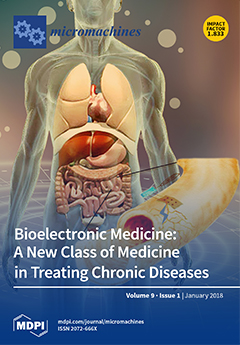Open AccessArticle
On-Chip Facile Preparation of Monodisperse Resorcinol Formaldehyde (RF) Resin Microspheres
by
Jianmei Wang, Xiaowen Huang, Pei Zhao, Xueying Wang, Ye Tian, Chengmin Chen, Jianchun Wang, Yan Li, Wei Wan, Hanmei Tian, Min Xu, Chengyang Wang and Liqiu Wang
Cited by 3 | Viewed by 5105
Abstract
Monodisperse resorcinol formaldehyde resin (RF) microspheres are an important polymeric material because of their rich surface functional group and uniform structural characteristics and have been increasingly applied as an electrode material, catalyst support, absorbent, and carbon microsphere precursor. The polymerization conditions, such as
[...] Read more.
Monodisperse resorcinol formaldehyde resin (RF) microspheres are an important polymeric material because of their rich surface functional group and uniform structural characteristics and have been increasingly applied as an electrode material, catalyst support, absorbent, and carbon microsphere precursor. The polymerization conditions, such as the gelation/solidification temperature and the residence time, can largely influence the physical properties and the formation of the 3D polymeric network of the RF microspheres as well as the carbon microspheres. However, few studies have reported on the complexity of the gelation and solidification processes of resol. In this work, we developed a new RF microsphere preparation device that contains three units: a droplet generation unit, a curing unit, and a collection unit. In this system, we controlled the gelation and solidification processes of the resol and observed its curing behavior, which helped us to uncover the curing mechanism of resol. Finally, we obtained the optimized polymerization parameters, obtaining uniform RF microspheres with a variation coefficient of 4.94%. The prepared porous RF microspheres presented a high absorption ability, reaching ~90% at 10 min. Thus, our method demonstrated the practicality of on-chip monodisperse microspheres synthesis. The product was useful in drug delivery and adsorbing large poisonous molecules.
Full article
►▼
Show Figures






